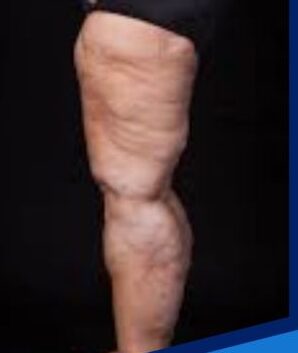Introduction:
Lipedema is a lingering ailment distinguished by anomalous fat buildup, frequently in the legs and at times in the arms. This disorder predominantly affects women, yet it is widely misinterpreted and mistakenly diagnosed resulting in significant bodily uneasiness accompanied by emotional afflictions. Although no remedy exists for lipedema, diverse techniques of therapy like changes to one’s diet could aid those coping with this condition to handle symptoms more efficiently whilst also enhancing their standard of living.
What is Lipedema?
Lipedema is characterized by an unusual increase in fat cell size, predominantly in the lower body regions such as legs and buttocks along with occasional involvement of arms. suffice to address this persistent fat accumulation in specific areas. Rewritten: Unlike obesity, which can affect the entire body, chronic adipose tissue is a condition that specifically targets certain areas. Traditional methods of weight loss such as dieting and exercise may not be effective in treating this ongoing buildup of excess fat.
Although the precise reason for lipedema remains not entirely comprehended, it is speculated that a mixture of genetic, hormonal and vascular elements are involved. A significant number of women with this condition have reported its existence in their relatives’ background indicating some hereditary influence. In addition to genetics, symptoms can deteriorate over time due to changes encountered during particular hormonal phases like puberty or pregnancy.
The Role of Diet in Lipedema Management:
Although diet is not a cure for lipedema, it plays an essential role in symptom management and enhancing overall health and wellness. The goal of dietary interventions is to reduce inflammation, support the proper functioning of the lymphatic system, manage weight levels that alleviate pressure on problem areas, and ultimately aid in effectively controlling symptoms for individuals with lipedema.
Key Dietary Strategies for Lipedema:
1.Anti-inflammatory Diet:
It is believed that persistent inflammation plays a role in the advancement of lipedema and amplifies discomfort and swelling. A diet abundant in anti-inflammatory foods, including fruits, vegetables, whole grains, healthy fats like those found in olive oil and fatty fish as well as lean proteins can alleviate bodily inflammation.
2.Avoiding Trigger Foods:
Individuals with lipedema may experience worsened inflammation and fluid retention due to certain foods. These trigger foods often include highly processed items that contain excessive amounts of sugar, unhealthy fats, refined carbohydrates, and high levels of sodium. By limiting or completely avoiding these types of food products, individuals can better manage their symptoms.
3.Hydration:
Maintaining optimal hydration levels is crucial for proper lymphatic system function and reducing fluid buildup. Adequate water consumption enables efficient elimination of toxins from the body, thereby alleviating unpleasant swelling or discomfort associated with lipedema.
4.Boosting the Function of Lymphatic System:
Consumption of certain foods and supplements can boost lymphatic drainage and circulation. Antioxidant-rich berries, citrus fruits, and green tea along with herbal remedies like ginger or turmeric are recommended for this purpose. To optimize the benefits of these dietary interventions in addressing lymphatic problems, one can also incorporate manual lymphatic drainage massage as well as compression garments into their treatment plan.
5.Macronutrients in Balance:
To maintain healthy blood sugar levels and prevent inflammation and weight gain, it is beneficial to balance macronutrients such as protein, carbohydrates, and fats in our meals. Each meal should ideally contain lean protein sources, complex carbs, and healthy fats to achieve satiety while promoting overall wellness.
6.Mindful Eating:
By adopting the practice of mindful eating, individuals can effectively curb overeating and foster a positive rapport with food by tuning into their hunger and fullness cues. Additionally, taking the time to consume food slowly, chewing it completely, and relishing each bite may improve digestion as well as nutrient uptake.
Sample Meal Plan for Lipedema
Here’s a sample meal plan that incorporates key principles of a lipedema-friendly diet:
Breakfast:
– Spinach and feta omelet with cherry tomatoes
– Whole grain toast with avocado
– Green tea or water
Snack:
– Greek yogurt with mixed berries
– Handful of almonds
Lunch:
– Grilled chicken salad with mixed greens, cucumbers, bell peppers, and balsamic vinaigrette
– Quinoa or brown rice pilaf
– Sliced apple with almond butter
Snack:
– Carrot sticks with hummus
– Herbal tea
Dinner:
– Baked salmon with lemon and dill
– Roasted sweet potatoes
– Steamed broccoli with garlic
– Mixed berry parfait with Greek yogurt for dessert
Hydration:
–Strive to consume a minimum of 8-10 glasses of water during the day, and increase your intake if you lead an active lifestyle or reside in a warm environment.
Final Thoughts
While managing lipedema may pose difficulties, introducing a nutritious and balanced diet into one’s routine can significantly improve the quality of life by alleviating its symptoms. The key lies in consuming anti-inflammatory foods that promote lymphatic function alongside maintaining a healthy weight to alleviate swelling discomfort throughout the body. Seek guidance from healthcare professionals such as registered dietitians or nutritionists to customize dietary adjustments suitable for individual needs and preferences. With holistic approaches towards nutritional interventions incorporated, those grappling with lipedema are empowered to cope efficiently while enjoying an enhanced sense of fulfillment through their active lifestyle pursuits.


